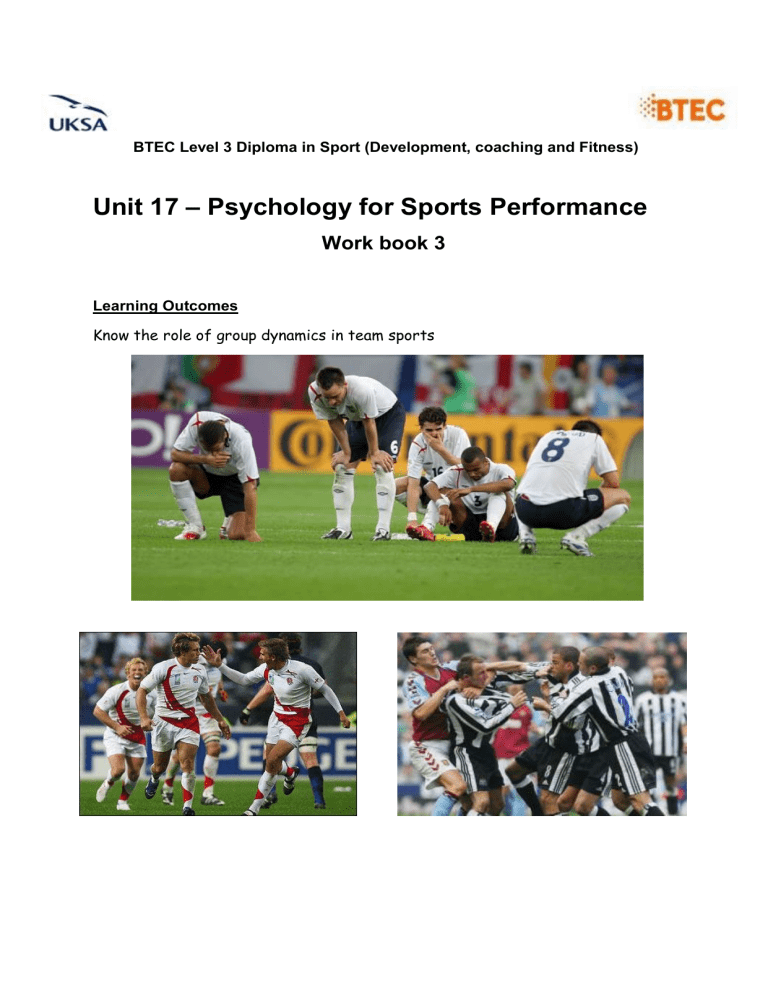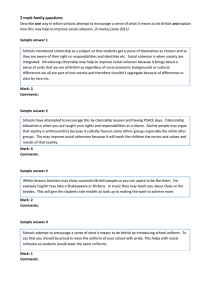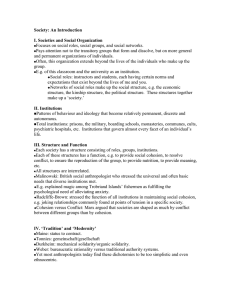
BTEC Level 3 Diploma in Sport (Development, coaching and Fitness) Unit 17 – Psychology for Sports Performance Work book 3 Learning Outcomes Know the role of group dynamics in team sports Learner Name: Sam Steward Task 1 You are required to identify and explain four factors that influence group dynamics and performance in team sports, for example teammates fighting on the pitch, a captain not leading their team. You should include aspects of group processes, cohesion and leadership. You may wish to include models to help explain how factors may influence performance and cohesion. Factor 1 Storming – is when conflicts begin to develop between the individuals in the group, its common for them to begin to question the leaders and they will start to resist the control of the group. Often conflicts begin because the demands start to be put on the group and some individuals become try to get into a more important role. The formal leader in the group tends to take more of a guidance role with decision making and helps the team move towards what is expected in terms of professional behaviour. The storming stage is the most difficult and critical stage to pass through. It is a period of conflict and competition as individual personalities emerge. Team performance may decrease in this stage because energy is put into unproductive activities Factor 2 The Ringelmann effect is a theory based on when a group size increases then the overall productivity and learning rate of the individuals will decrease from anything up to about 50%. It has been assumed that the Ringelmann effect is caused not by coordination losses but by motivational faults or losses and it normally occurs when people are not accountable for their own performances as the group gets larger the athletes can tend to hide behind other athletes and not get noticed as much as they did before. Factor 3 Cohesion is a dynamic process where groups try and stick together and united in the aim to achieve goals and objectives: Social cohesion: relates to how much team members enjoy each other’s company in sports, its important that the players get along with each other while playing the game whether they win or lose. Task cohesion: Relates to how well a group or team does when working together to achieve the goals and objectives Personal cohesion is key as the different members of the group need to work together as one to achieve the goals and objectives, if they share the same goals same opinions and levels of commitment to it then they will have higher levels of cohesion. Factor 4 Behavioural leadership is when a leader will try to lead from the front as an example, they will often learn from others about how to act, perform, look and more to make sure that they are acting in the correct way for to look up to as the qualities that the leader presents will then In this final part you are required to analyse the factors that influence group dynamics and performance. Use examples for each of your similarities and differences and make sure you relate to group dynamics and performance in team sports. Factors 1 and 2 the or Storming and the Ringelmann effect are similar and different in the aspects as storming shows the group coming together and outputting who has what role who are the people at the top the leaders and starters the more experienced players and the people at the bottom who don’t play as much don’t have much as an impact as the other players, or the people that “Hide” which is what happens in the Ringelmann effect so they are similar in this capacity but they are also different as the Ringelmann theory is more based on the players that hide rather than being based around the whole team and being more competition and ego based like storming is. Factor 3 and 4 or personal cohesion and behavioural leadership are also similar and different at the same time as the personal cohesion suggests that people need to come together to work for the same thing and all behave in a similar fashion by training hard to achieve the goals which is where behavioural leadership comes in as they both follow each other in heading towards goals. But they are different as personal cohesion you come together as a team an work together to get the goals and targets but in behavioural leadership one person probably a more experienced and better player will be this example to the younger and less experienced players.




